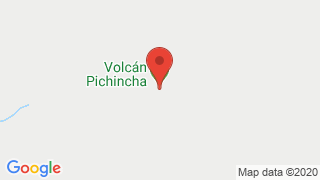Pichincha volcano





Pichincha’s Massif are a set of hills and volcanoes of Ecuador, located in the capital of the country, Quito. They belong to the Western Cordillera of the Ecuadorian Andes. Its main volcanoes are the Guagua Pichincha and the Rucu Pichincha.
- Last eruption: 2002
- Location: Ecuador - Pichincha – Quito
- Altitude: 4794 meters
- Cordillera: Andes, Western Cordillera
It presents several summits, which in the following list are mentioned from the geologically oldest at the northeast to the newest at the southwest. Some of the names of the summits were derived from quichua.
- Loma de las Antenas.
- Cúndur Guachana (Condor Nest in Quichua)
- Rucu Pichincha (rucu = old in Quichua)
- Cruz Loma
- Enchanted Father (also called Enchanted Friar)
- Guagua Pichincha (bus = child in Quichua)
- Rucu Pichincha Volcano
Rucu Pichincha has a height of 4698 meters above sea level, it is an extinct volcano. This volcano has two craters, one inside the other, which are the result of its eruptions. It is the closest volcano to Quito city
To the south of the Pichincha, near the southern part of Quito, there is also a volcanic hill called Ungúí.
Rucu Pichincha has erupted in 1534, 1539, 1566, 1575, 1588, 1660 and 1662, when the city was covered by 30 centimeters of ash. Almost two centuries had passed without torrents of lava and earthquakes, and some geologists believed it was already an inactive volcano. On March 22, 1859, his last great eruption took place, leaving Quito city almost destroyed.
The Berlin scientist Alexander von Humboldt ascended to Pichincha in 1802, during his research trip through South America.
Guagua Pichincha Volcano
Guagua Pichincha is the most active volcano in the Ecuadorian Western Andes and Ecuador, along with the Tungurahua volcano. What is the altitude of the Guagua Pichincha? It is 4784 meters high above sea level
In 1660 the largest eruption of the well-known Pichincha volcano took place. Although pyroclastic shells did not fall in the city, it was bathed by a layer of ash 30cm thick in a radius of 1,000 km.
Guagua Pichincha View
From there you can have a spectacular view towards the crater that has a horseshoe figure, which is open to the western side. The existence of volcanic activity is checked, due to the smoke that emerges from inside the crater, so sedimentation in cones and ash can also be obsessed. It takes about 1 hour with 50 mins for the descent
In what year was the last eruption of the Pichincha bus?
In 1999 there was a high volcanic activity. On October 7 there was an ash explosion in the crater of the volcano, raising the ash to 12 km high. Quito was under ashes. For several months the continuous ash expulsions from the volcano generated a panorama of confusion, to this is added that on the date of 1999 the country was going through a very deep economic and institutional crisis.
Pichincha volcano how to get there
First it is important to adhere to the following recommendations for Volcan pichincha tourism:
- Go in large groups.
- Do not carry, at least visibly, cameras.
- Bring the right things and the minimum money.
It is safer if you climb in vehicles to certain points, such as the top of Cruz Loma, from the Templete de los Heroes del Pichincha, on the Top of Freedom. You can also arrive by car to the top of the Loma de las Antenas, but you must have permission to cross the Mi Cielito farm.
Places to climb:
- Miraflores sector: through the Faculty of Physical Education the forest is crossed and the Cima de Cruz Loma is reached.
- By El Placer: for the remembered and missing Chorrera, but over there it is very dangerous. This route is no longer used by multiple robberies.
- By San Carlos: you reach the northern part of the Rucu Pichincha wall.
- By Lloa: you climb Guagua Pichincha. You can arrive by car to the shelter.
- By Las Antenas: but the ascent by the top called El Cóndor Guachana is very hard, it has a lot of inclination and it is very tired to climb there, especially for tourists.
- By Obispo Diaz: You arrive on the bus La Primavera - Balcón del Valle. Take the left side of the creek to climb Cruz Loma. If you take the right side you reach the Condor Guachana.
It is recommended to bring: Normal food, fruits, cookies, lots of liquid, preferably water without gas, aromatic waters. Candies, chocolates or scrapes. To eat, bring normal, home food, in a tub. All this is called marching food. The experts, ask the authorities, to form patrols, to collaborate in the protection of tourists and youth who like to climb the mountains, because there are many assaults.

Publicado en:
Publicado por:



